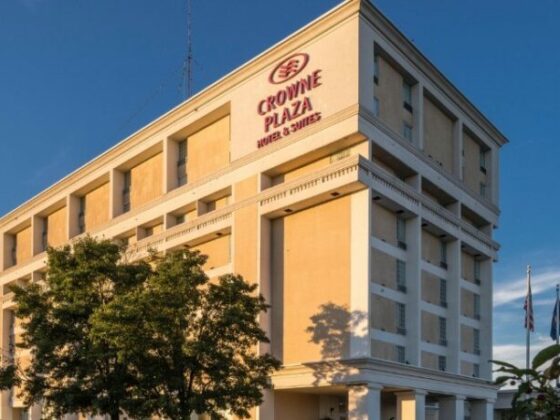
Independent luxury hotels are typically small: The median room count of the hotels in the Relais & Châteaux portfolio for North America was around 40 when I served as president there. At such properties, success at knowing every guest by name and preference seems achievable; the GM can personally greet VIPs and treat every guest as a VIP, too. Doing that with more than 1,000 rooms and 2,200 employees is another thing altogether. How can you achieve the same intimate relationship? I had to figure this out in a hurry.
In April 2021, I took over the reins of the 1,047-room The Boca Raton in South Florida (the largest non-gaming luxury resort operation in North America), with a mandate from management: Lift the hotel to Forbes’ Five-Star standards and a 100% market share against the legacy competitive set. They asked that this be accomplished before the resort’s 100th anniversary, in January 2026. (To make this harder, the hotel was in mid-phase I of a multi-year renovation plan.)
INTIMACY AT SCALE
My strategy for achieving this goal was to segment the property’s 1,000-plus rooms into five distinct “hotels,” ranging in size from 65 to 350 rooms, each with its own identity and subtly different style of service. To accomplish the goal of intimacy, each hotel provides the guests with a dedicated staff and has an ethos and positioning designed to appeal to a specific type of luxury traveler; you could almost call it a “choose your own lodging” product. Individual staffing also means that when a guest needs something or has a concern or challenge, they can be helped by someone they have already met face-to-face. Our experience is that service recovery delivered by a familiar onsite team member offers the best scenario for resolving such situations successfully.
ADVANTAGES OF SCALE
Operating at a larger scale enables delivering an experience that would strain the resources of a smaller hotel. For example, the 400 employees who work our banquet operation have the resources and staffing (what I call “breathing room”) to do remarkable things, like bringing in a beekeeper and hive (yes, the bees were safely encased in a glass dome) to provide the freshest honey. I had nothing to do with the decision to do this, or with its delivery, but the guests were delighted.
Scale allows us to also provide mentorship programs, whereby senior staff across the f ive hotels develop junior talent systematically. It also allows us to hire for specialized roles that smaller properties can’t justify, such as dedicated concierge teams, full-time sommeliers and in-house floral designers, which guests then benefit from.
There are financial economies of scale, too, such as procurement savings on the products we order from vendors—everything from napkins to landscaping supplies.
BRINGING IT BACK HOME
The risk in getting bigger is that it gets easier to attempt to serve every guest in the same way, leaning on what could erroneously be classified as “best practices,” since a fundamental concept of luxury is personalization. The luxury market has proven that guests will pay premium rates for personal experiences, which is what a well-thought-out approach can provide at scale; you just need to watch out for traditional big-box hotel thinking.
How are we doing on our goals? We now have two Forbes Five-Star ratings for Beach Club and our Spa Palmera and we’ve been exceeding our owners’ request for 100% share against our legacy comp set. And we feel comfortable that we will always be exactly the right size for what a particular guest is seeking, with the right human capital providing them the personal experience they are hoping for.
This story was contributed by Daniel Hostettler, president & CEO, The Boca Raton.








